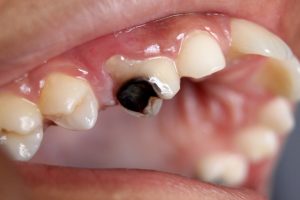Key points
- Artificial intelligence (AI) models show promise for detecting cavities, but their accuracy varies depending on the method used.
- AI may be better at detecting early cavities than advanced ones.
- Professional and dental cameras provide better results than smartphone cameras.
Background
Dental caries is a widespread problem, and early detection is crucial. While visual examination by dentists is the gold standard, it can be subjective and not accessible to everyone. This review explores the potential of AI for detecting caries in oral photographs taken with various cameras. The study found promising results, with AI models achieving accuracy between 42.8% and 95.4%. However, further research is needed to improve effectiveness and explore how AI can be used in clinical practice, teledentistry, and public screening programmes.
Methodology
The study conducted a systematic search, identifying 3410 unique records, from which 30 were selected for full-text reading. Ultimately, 19 studies were included for data extraction. Methodological quality assessment using QUADAS-2 revealed varying levels of bias and applicability concerns across studies. Six studies were deemed to have a low risk for all four domains of QUADAS-2, while seven studies were categorized as having low concern for all three domains of applicability.
The characteristics of the included studies varied. They were conducted between 2019 and 2022, with sample sizes ranging from 45 to 12,600. The prevalence of caries lesions differed among studies, with some reporting more sound teeth than carious ones and vice versa. Various reference standards were employed, including ICDAS and tactile/visual examination.
Regarding the performance of AI models, F1-scores for caries detection ranged from 42.8% to 95.4%. Stratification by task and image acquisition device revealed variations in performance metrics. For instance, for classification tasks, F1-scores ranged from 68.3% to 94.3% for professional cameras and from 78.8% to 94.3% for intraoral cameras. Similarly, for detection tasks, F1-scores ranged from 86.6% to 95.4% for professional cameras and from 42.8% to 87.6% for intraoral cameras.
A subgroup analysis comparing primary and secondary caries detection found comparable mean average precision (mAP) but significantly different F1 scores. Moreover, there were differences in performance observed between different AI model types, with equivocal results regarding the advantage of two-stage models over one-stage models.
Additionally, performance varied based on the type of image acquisition device, with differences observed between professional cameras, intraoral cameras, and smartphones.
Conclusion
The review highlights the potential of AI-based models in detecting dental caries from oral photographs, despite variability in performance metrics due to methodological differences. Limited control designs in studies hindered adjustments for confounding factors, and two-stage models didn’t demonstrate significant advantages over one-stage models. Detection of primary caries proved more successful than secondary caries, possibly due to clinical variability and data availability. However, challenges like reliance on visual annotations and single-centre studies persist, along with the inability to detect disease activity accurately. Further research addressing these limitations, including broader controlled trials, transparency in reporting, and exploration of smartphone camera potential, is crucial for advancing AI-based caries detection.
Comment
Moharrami et al.’s review provides valuable insights into the potential and limitations of AI-based caries detection using oral photographs, with reported accuracies ranging from 42.8% to 95.4%. The authors effectively examine factors like image acquisition devices and caries severity, showing better results with professional and dental cameras compared to smartphones.
However, methodological heterogeneity among included studies limits the conclusive findings, as acknowledged by the authors. This variability may introduce bias and affect the reliability of conclusions. Additionally, the limited number of studies with control designs and reliance on visual annotations for reference tests may introduce subjectivity and impact result validity.
The review also sheds light on ethical issues associated with AI for dental caries, such as overdiagnosis and overtreatment leading to unnecessary procedures and potential patient harm. Lack of transparency in AI model decision-making poses challenges for dentists to critically evaluate diagnoses. Transparency in model decision-making is crucial for building trust and ensuring responsible use in clinical practice.
Links
Primary Paper
, , , , , , , & (2023). Detecting dental caries on oral photographs using artificial intelligence: A systematic review. Oral Diseases, 00, 1–19. https://doi.org/10.1111/odi.14659
Picture Credits


This is an important piece of evidence for this. The reason for the scanner is they are redundant 90% of the time. Nurses could do this.
https://youtu.be/ObIkCkWKIj4?si=UxYmrk70o6grCSBP
and this is public-facing
https://youtu.be/qHkUo1iowog?si=Y7yfzFGHuB-FPFyD